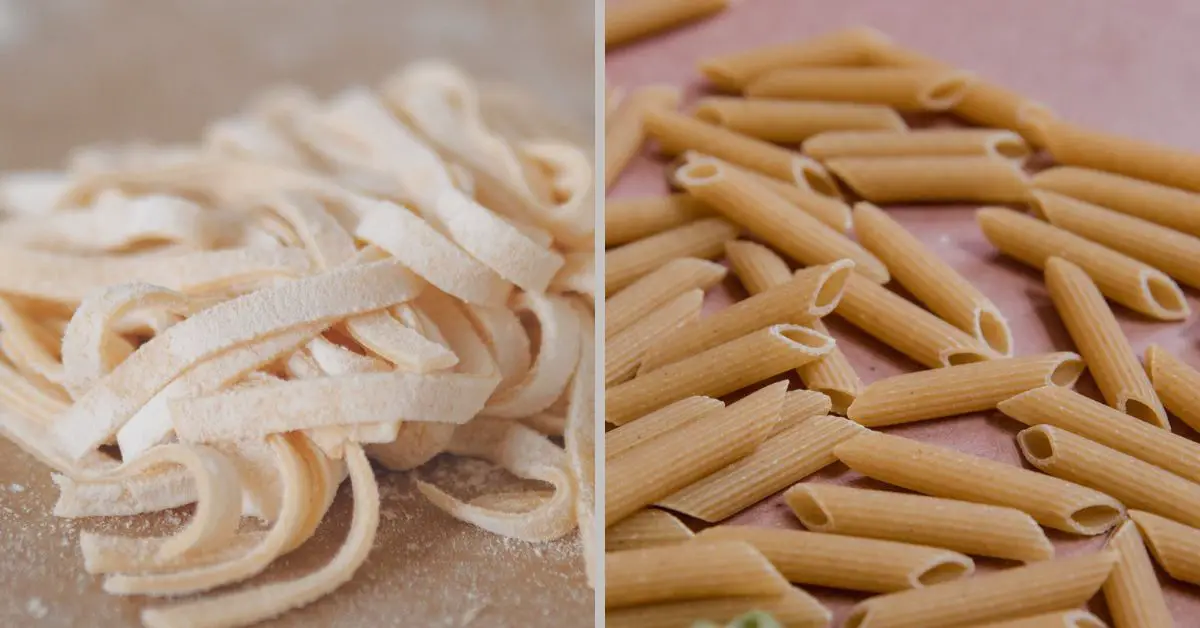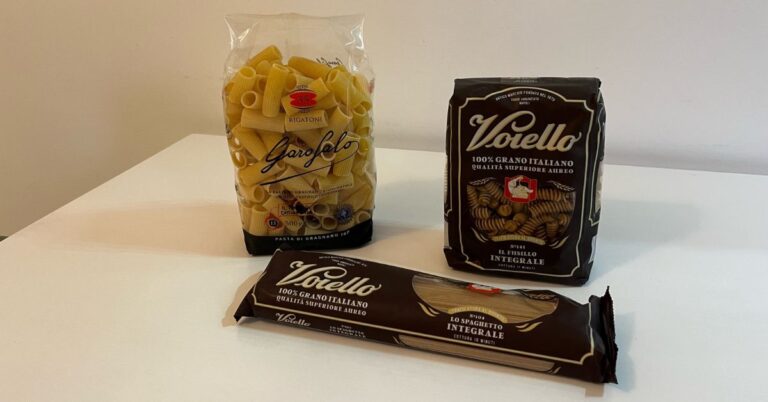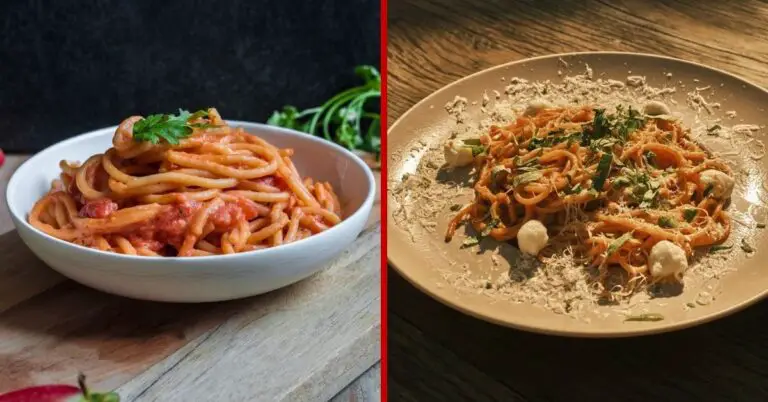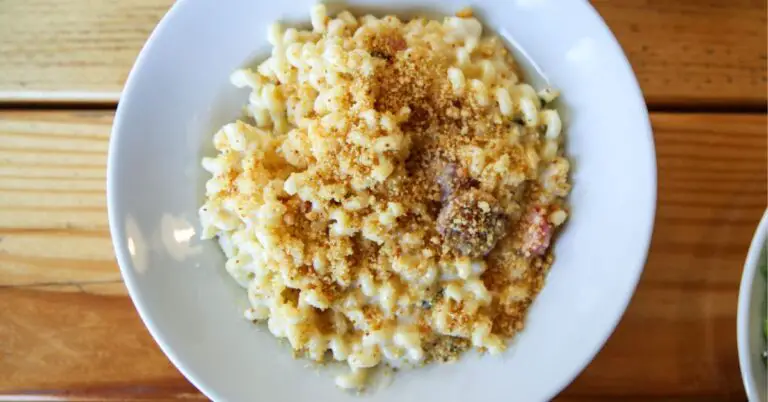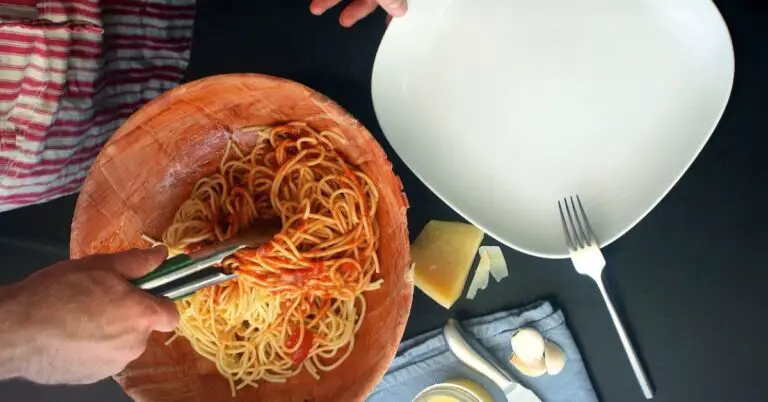When discussing pasta in Italy, it is crucial to specify the type. In this instance, we are not focusing on the favorite shapes of pasta, but rather on a basic distinction between two macro-categories of pasta: Fresh pasta and Dried pasta.
Key Takeaways Fresh Pasta vs. Dried Pasta.
- Basic Difference: the most fundamental difference between fresh and dried pasta lies in their moisture content: fresh pasta contains a significant amount of water and is softer. In contrast, dried pasta is dehydrated and much firmer.
- Water Makes the Difference: Fresh pasta contains more water, hence it’s perishable and stored cold. Dried pasta is dehydrated, lasting longer without refrigeration.
- Taste and Texture: Fresh pasta, with its variety of flours, often tastes better and has a softer texture, while dried pasta has a more consistent taste and firmer bite.
- Italian Preferences: In Italy, dried pasta is more common for everyday use due to its convenience and lower cost, while fresh pasta is for special occasions or homemade treats.
- Usage Tips: Fresh pasta cooks quickly but expires sooner; dried pasta is great for stocking up as it lasts longer and is more versatile in storage.
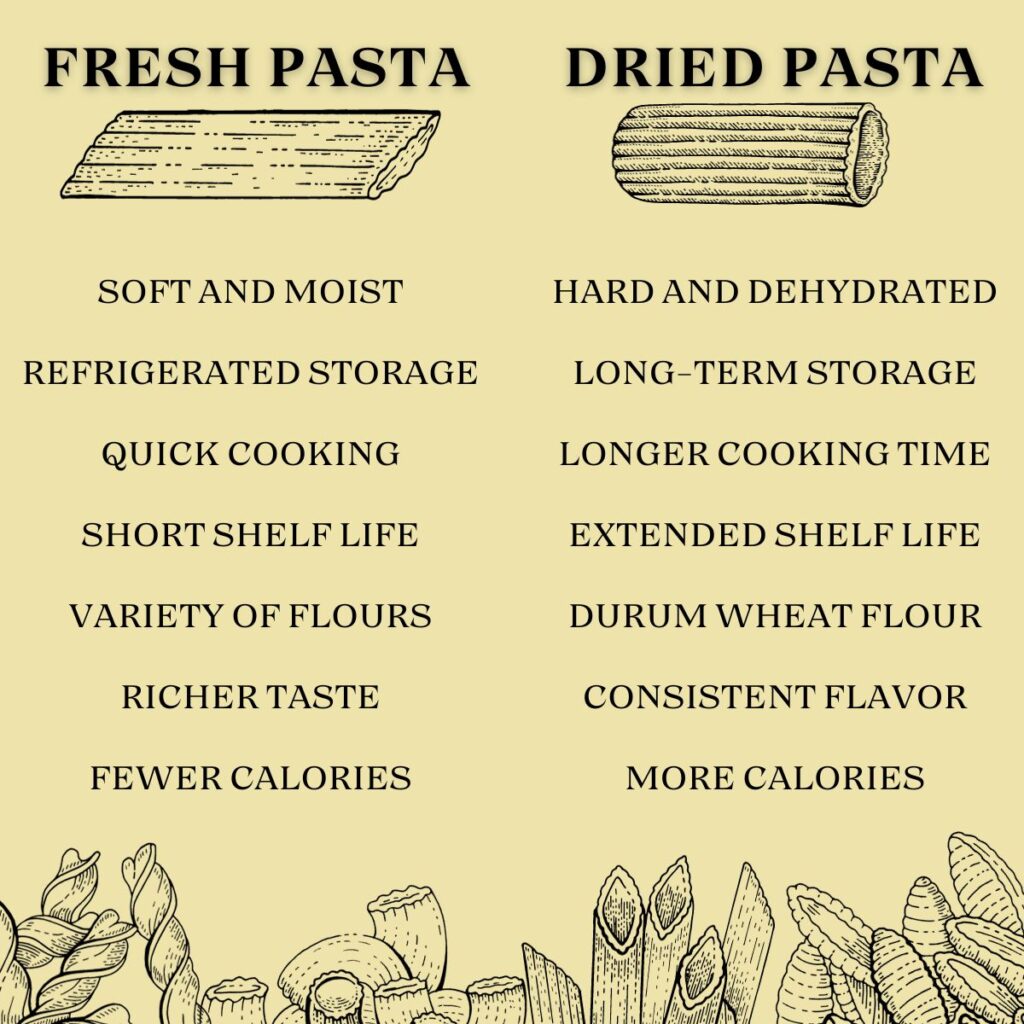
Fresh Pasta: Fresh pasta is moist, contains a significant amount of water, and is typically found in the refrigerated section of the supermarket. It is made from water and flour, resulting in a soft and pliable texture. However, due to its moisture content, fresh pasta has a limited shelf life.
Dry Pasta: Dry pasta, in contrast, is devoid of water and has been dried to extend its shelf life. It is usually made from durum wheat semolina and is found outside the refrigerated section in supermarkets. Dried pasta feels very stiff to the touch and cannot be reshaped. Its dehydrated state allows it to be stored in the pantry for much longer periods, often lasting for months or even years.
What are the Advantages and Disadvantages of using Fresh versus Dried pasta?
In this table, you can see the advantages and disadvantages of fresh pasta and dried pasta:
| Advantages | Disadvantages | |
|---|---|---|
| Fresh Pasta | -Better taste and bite -Can be purchased already filled -Cooks in about 5 minutes -Can be handmade at home | -Costs more on average -Found only in the refrigerated section -Expires quickly -Can go bad -Difficult to transport -Limited shapes |
| Dried Pasta | -Costs less -Keeps for months -Does not go bad easily -Found almost everywhere -Many shapes -Easy to transport | -Less distinctive flavor -Takes longer to cook -No stuffed options |
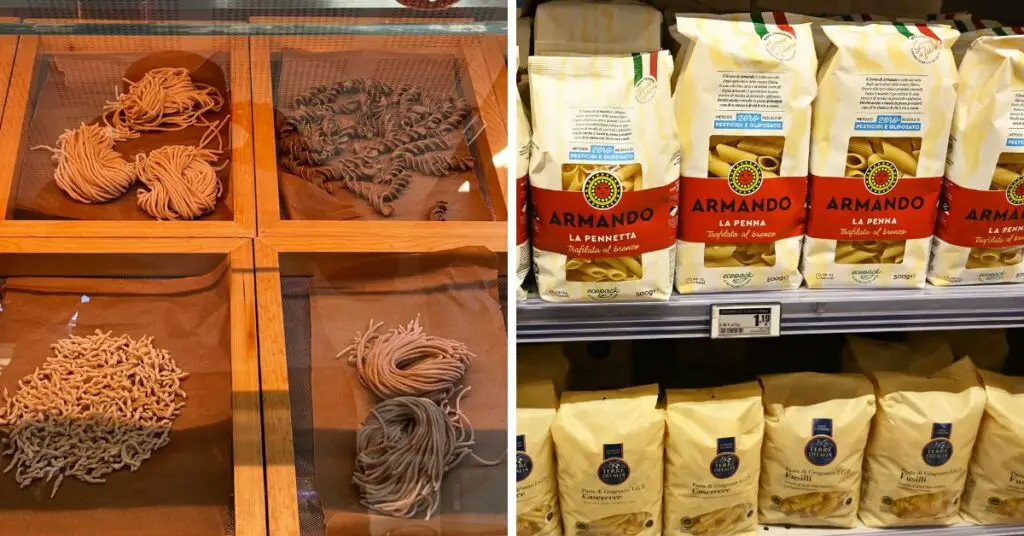
This drying process was not used with the first pasta shapes. In fact, the very first pasta shape eaten in Italy was a sheet of fresh pasta, similar to today’s lasagna.
Visually, in addition to being moister, fresh pasta is also sprinkled with a layer of white flour. This flour is used to prevent the noodles from sticking together.
Thus, it is understood that fresh pasta and dried pasta are two distinct products. One is eaten almost immediately when fresh (fresh pasta), while the other is dried to be consumed several months later (dried pasta)
Fresh Pasta vs Dried Pasta: the real and only difference.
Having introduced the first difference between fresh and dried pasta (drying), let’s take another step forward and talk about how the presence of water plays a major role in the relationship between fresh and dried pasta.
In fact, if we were to figure out what is the one and the only difference between dry and fresh pasta, this would be…water!
In fact, the two categories of pasta are distinguished precisely by the amount of water present:
- Fresh pasta is moist and contains a good percentage of water in it.
- Dried pasta is devoid of water because it has been dried.
Why is water so important in understanding the differences between fresh and dried pasta?
Because water is an essential nutrient for bacteria and other microorganisms whose proliferation it facilitates.
This is why fresh pasta should be kept refrigerated and has narrow expiration dates, while dried pasta does not need refrigeration and has longer expiration dates.
The amount of water in fresh and dried pasta is so important that in Italy it is regulated by law, read below to learn more.
What does pasta Secca mean in Italy? [Dried Pasta]
According to Italian law, industrially produced dried pasta intended for sale must be made with water and durum wheat flour: semolina, semolato, and whole wheat semolina.
It must also meet certain characteristics, such as the highest moisture content of 12.5 percent (it is in fact subjected to a drying process) and a certain minimum percentage of protein, which also determines its quality.
If it contains different ingredients, they must be indicated on the label and it is classified as “special pasta.”
Here you can see which are the most consumed dry pasta brands in Italy.
What does pasta Fresca mean in Italy? [Fresh Pasta]
In addition to durum wheat flour, fresh pasta can be made from soft wheat flour, which is also usually used for bread. To be sold in bulk, fresh pasta needs to be stored at a temperature no higher than 4 degrees, with a tolerance of 3 degrees during transport and 2 degrees in other cases, protected by packaging not intended for the final consumer.
Fresh pasta should be consumed within five days of production. In the case of packaging, on the other hand, fresh pasta must meet certain requirements, such as a minimum moisture content of 24 percent, storage at a minimum of 4 degrees with a tolerance of two units, and having undergone a pasteurization process.
Which pasta tastes better? Fresh or Dried
The difference between fresh and dried pasta is mostly felt on the palate and bite while eating it, although pasta experts argue that fresh is better because the flour used is not the same.
In fact, dried pasta allows only durum wheat flour, while fresh pasta also allows soft wheat flour. There is only one flour that makes fresh pasta and dried pasta excellent, and that is durum wheat semolina, which is rich in protein.
In my opinion, fresh pasta tastes better and has a nicer texture, which is why I prefer to eat fresh pasta when I can.
Speaking of the taste of pasta, did you know that the different shapes of pasta actually all have the same taste? it is the chewing sensation that really makes the difference in taste.
Do Italians use fresh or dried pasta?
In Italy, most of the pasta purchased is dried, this is because it is pasta that can be found everywhere, has a reduced cost is industrially produced, and is easily transported and stored for a long time outside the refrigerator.
I found a relevant statistic for comparing the consumption of fresh pasta and dried pasta in Italy. According to the website “I Primi d’Italia,” the total national consumption shows that 91% is dried pasta and 9% is fresh pasta, which amounts to 1.4 million tons of dried pasta compared to 144 thousand tons of fresh pasta.
source
Fresh pasta is bought for special occasions or is requested at restaurants if there is someone in the kitchen who knows how to make pasta, it is on average more expensive than dried pasta, and this is also why it is eaten only on holidays.
Also on feast days, some families who have the machinery and skill produce their own fresh pasta and eat it shortly afterward.
In conclusion, the average Italian eats more dried pasta, but given a choice of being able to spend a little more, or having the time and skill, would prefer fresh pasta, which is often perceived as better.
Pasta, whether fresh or dried, is a unifying element; much of our Italian history revolves around a pasta dish, but the ultimate challenge is won by dried pasta. A recent survey determined that dried pasta in Italy makes up ¾ of total pasta consumption.
Here you can see the dry pasta shapes that we Italians love the most.
Why is there no stuffed dried pasta?
As a matter of preservation, it is impossible to make stuffed dried pasta because drying would ruin the filling of the pasta. The only thing that can be done is the creation of special pasta (other than egg pasta) made from alternative flours, for example, whole wheat or legume-based.
In contrast, in fresh pasta, stuffing is super recommended. Just think of tortellini, cappelletti or ravioli. And if a few decades ago we were limited to classic versions (e.g., tortellini with prosciutto), today it is possible to find a wide range of fresh-filled pasta on the market, super tasty and original.
Storage and expiration date of dried pasta compared to fresh pasta.
Fresh pasta before being put into the package for sale is pasteurized, it must be stored in the refrigerator at a temperature between 2/4°C, whereas dry pasta after drying is bagged and has a much longer shelf life.
From the point of view of health, attention must be paid to storage: fresh pasta is a pasteurized product, and it must be stored in the refrigerator at a temperature between 2 and 4 degrees, for no more than two or three days.
Dried pasta, on the other hand, lasts up to one or two years after the expiration date if it has been stored well in its unopened package and in a dry place out of the sun.
If you do not know when you will be able to eat the pasta you are buying, then it is better to buy dried pasta, so you can store it out of the refrigerator and eat it even months after purchase.
Does fresh pasta cook faster than dried pasta?
Because dried pasta contains very little water as a result of ‘drying, it needs more time during the cooking phase to absorb the water again and be ready to eat.
So dried pasta on average takes many more minutes to cook than fresh pasta. In fact, there are some types of dried pasta that need more than 10 minutes to cook.
For fresh pasta (except in exceptional cases) it takes just those 2-3 minutes and it is ready to eat!
It is important to know that both fresh pasta and dried pasta must be cooked with the same cooking technique, nothing changes and you can see my guide here.
Why does fresh pasta contain eggs?
Actually, both fresh and dried pasta can have eggs among the ingredients.
Egg pasta is a basic preparation of Italian cuisine, particularly in the Emilia area. It is a simple dough made from chicken eggs and wheat flour, divided into small regular shapes, and intended for cooking.
The terms egg pasta and fresh pasta are not necessarily synonymous. In practice, egg pasta can be either fresh or dry; egg pasta made at home, in the laboratory, or even industrially as long as it is immediately frozen is considered fresh; on the other hand, egg pasta sold packaged as semolina pasta is dried.
How much dried pasta is equal to fresh pasta?
In terms of correspondence between fresh and dried pasta, in order to have the same portion size, the reference grams will change: 70 g of dried pasta is in fact equal to about 90 g of fresh pasta.
We cannot help but mention the cooking yield: dried pasta in fact yields much more, just think that 250 grams of dried pasta is enough for 4 people, while the same amount of fresh pasta can feed 3 people.
To equalize the grams of fresh and dried pasta, I suggest you follow this short rule:
Multiply the amount of dried pasta used by about 1.3.
So: 130 g of fresh pasta = 100 g of dried pasta.
Fresh pasta or dried pasta: which has the least calories?
In addition to the role of hydration, water also plays an important part in matching calories between fresh and dried pasta.
In fact, we can say that it plays an essential role in matching fresh and dried pasta in terms of calories and even grams.
And the reason is very simple: water contains no calories. Consequently, fresh pasta will be less caloric than dried pasta in which, by subtracting the water, the nutrients are concentrated and the calories increase.
Generally speaking, and again evaluating the correspondence between fresh and dry pasta in terms of calories, we can say that the calorie density is:
- 270 kcal/100 g for fresh pasta
- 350 kcal/100 g for dried pasta
Both types of pasta, as they are cooked, absorb water and it is this latter element that lowers the calorie content.
We must remember, however, that dried pasta is dehydrated and for this reason, it is bound to absorb more water than fresh pasta and lower the calories. So, we find that as a result of cooking, fresh pasta, and dried pasta have almost equal calorie content.
If you are following an eating plan to lose weight, therefore, choosing one over the other, as far as calories are concerned, does not lead to relevant benefits.
In addition, it is always the seasoning that makes a difference, such as the extra virgin olive oil and sauces used, that make a pasta dish high in calories, which can be disposed of by walking or working out.
If you don’t know which condiment to associate with a certain pasta shape, read the link to find out about the pasta and sauce combinations we make here in Italy. Even if some shapes of fresh pasta are so delicious that you could even eat them plain.

